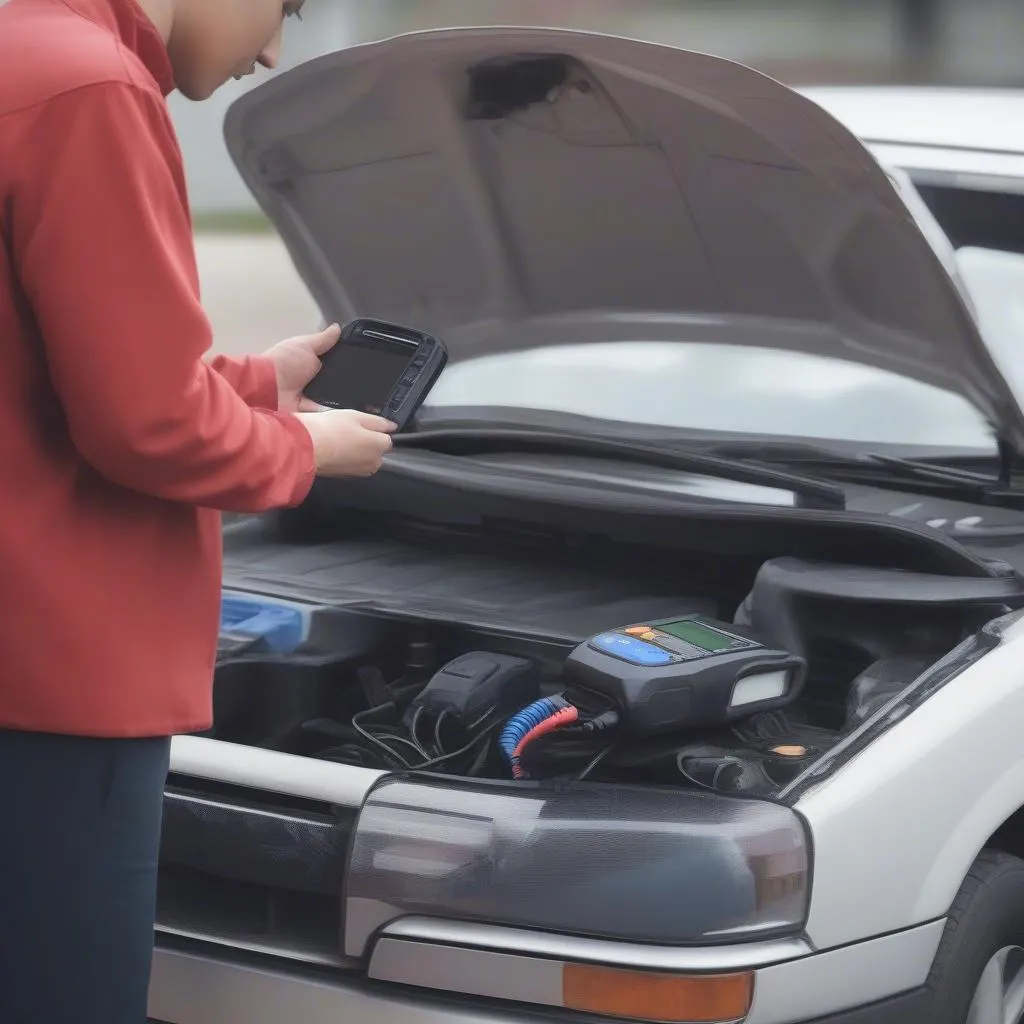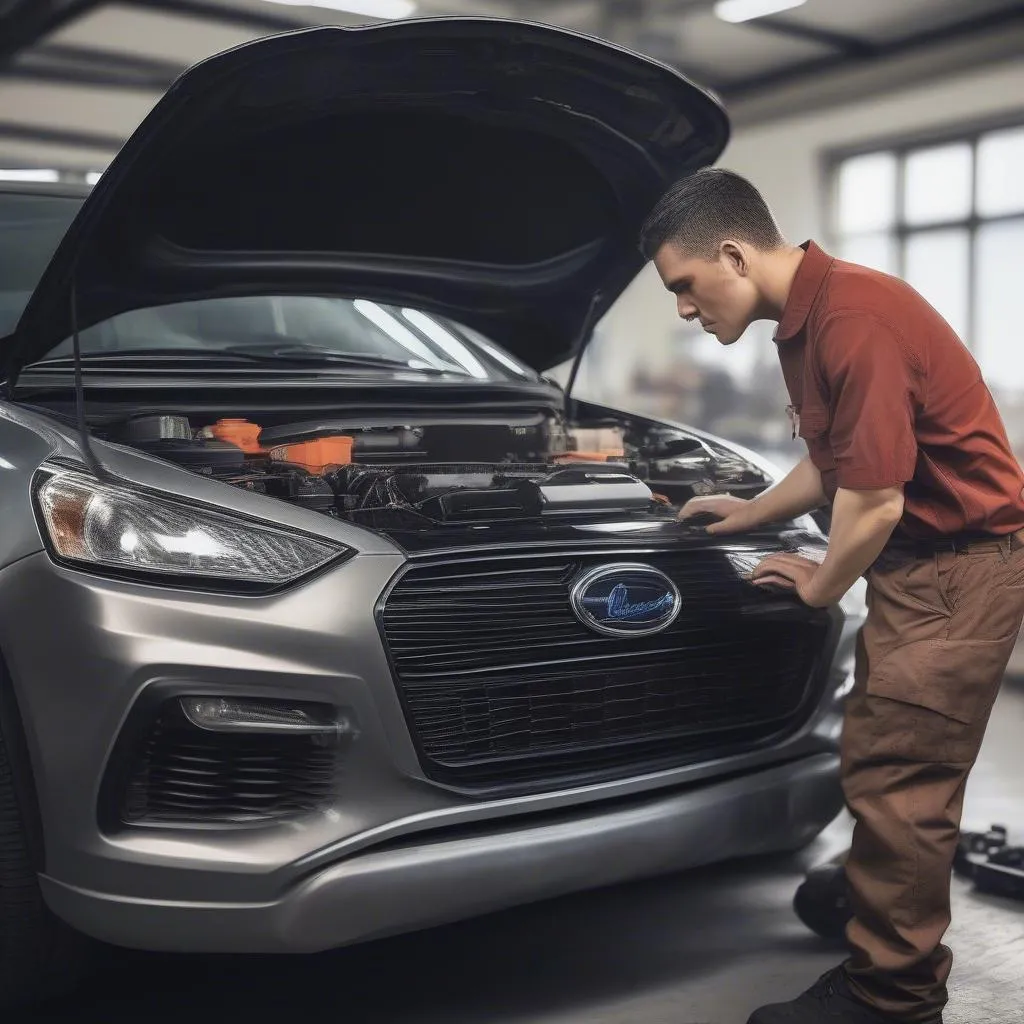You’re driving down the road when suddenly your car starts acting up. The engine light comes on, and you’re not sure what to do. You take it to your mechanic, and they tell you it needs an OBD repair. But how much will it cost?
OBD stands for On-Board Diagnostics, and it’s a system that monitors your car’s emissions and performance. When there’s a problem, the system sends a signal to the engine control unit (ECU), which then turns on the check engine light.
Understanding OBD Repairs
What does “OBD Repair” mean?
The term “OBD Repair” can be quite broad, and the cost can vary significantly depending on the specific issue. It could involve:
- Diagnosing the problem: This involves using a diagnostic scanner to read the OBD codes and determine the underlying issue.
- Replacing a faulty sensor: This could be an oxygen sensor, a mass air flow sensor, or any other sensor that is part of the OBD system.
- Repairing a faulty wiring harness: This could be caused by damage from corrosion, wear and tear, or even rodents.
- Programming a new ECU: This may be necessary if the ECU has failed or if you’re installing a new engine.
How Much Does it Cost to Repair OBD?
Diagnosis Costs
The cost of diagnosing an OBD problem typically ranges from $50 to $150, depending on the location and the type of shop you go to.
Sensor Replacement Costs
The cost of replacing a faulty sensor can vary greatly depending on the specific sensor and the car you drive. For example, a simple oxygen sensor might cost $100 to $200 to replace, while a more complex mass air flow sensor could cost $300 to $500.
Wiring Harness Repairs
Repairing a faulty wiring harness can be a complex process that may involve replacing damaged wires or entire sections of the harness. This can range from $100 to $500 depending on the severity of the damage.
ECU Programming
Programming a new ECU can be quite expensive, ranging from $500 to $1,000 or more.
Factors Affecting OBD Repair Costs
The final cost of an OBD repair can be influenced by a number of factors, including:
- The age and model of your car: Older cars may have more complex OBD systems, which can increase repair costs.
- The severity of the problem: Simple issues, like a loose connection, may be cheaper to fix than more complex problems.
- The location of the repair shop: Repair costs can vary significantly depending on the region and the type of shop you go to.
- The mechanic’s labor rate: The hourly rate charged by the mechanic can also impact the overall cost.
Common OBD Problems and Their Costs
Here are some examples of common OBD problems and their estimated costs:
- Check Engine Light On: This could be caused by a variety of issues, from a simple loose gas cap to a more serious problem like a faulty oxygen sensor. The cost to diagnose and fix this issue can range from $50 to $500 or more.
- Engine Misfire: This is often caused by a faulty spark plug or ignition coil. Replacing these parts could cost $100 to $300.
- Reduced Fuel Economy: This could be caused by a variety of issues, including a faulty oxygen sensor, a clogged air filter, or a problem with the fuel injectors. The cost to diagnose and fix this issue can range from $50 to $500 or more.
- Engine Stalling: This could be caused by a variety of issues, including a faulty fuel pump, a problem with the ignition system, or a faulty sensor. The cost to diagnose and fix this issue can range from $50 to $1,000 or more.
How to Save Money on OBD Repairs
- Get a second opinion: Before you commit to a repair, it’s always a good idea to get a second opinion from another mechanic. This can help you ensure that you’re not being overcharged.
- Shop around for parts: Parts prices can vary significantly between different retailers. If you know what needs to be replaced, take the time to shop around for the best prices.
- Consider DIY repair: If you’re comfortable working on your car, you may be able to save money by doing some of the repairs yourself.
- Use a diagnostic scanner: This can help you identify the problem and may save you the cost of a mechanic’s diagnosis.
- Keep your car regularly maintained: This can help prevent many OBD problems from occurring in the first place.
Other OBD-Related Questions:
- How to Reset the Check Engine Light: You can usually reset the check engine light by disconnecting the battery for a few minutes. However, this only clears the code and doesn’t fix the underlying problem.
- How to Read OBD Codes: There are many different OBD code readers available on the market, from basic scanners to advanced diagnostic tools.
- What Does “OBD2” Mean: OBD2 is the latest version of the On-Board Diagnostics system, which is used on most cars manufactured after 1996.
Conclusion
OBD repairs can be expensive, but they’re often necessary to keep your car running smoothly. By understanding the potential costs and taking steps to prevent problems from occurring in the first place, you can help minimize the cost of OBD repairs.
Do you have any questions or need help with your car’s OBD system? Contact us on WhatsApp at +84767531508. We have a team of expert mechanics available 24/7 to help you.
 OBD Scanner
OBD Scanner
 Mechanic
Mechanic